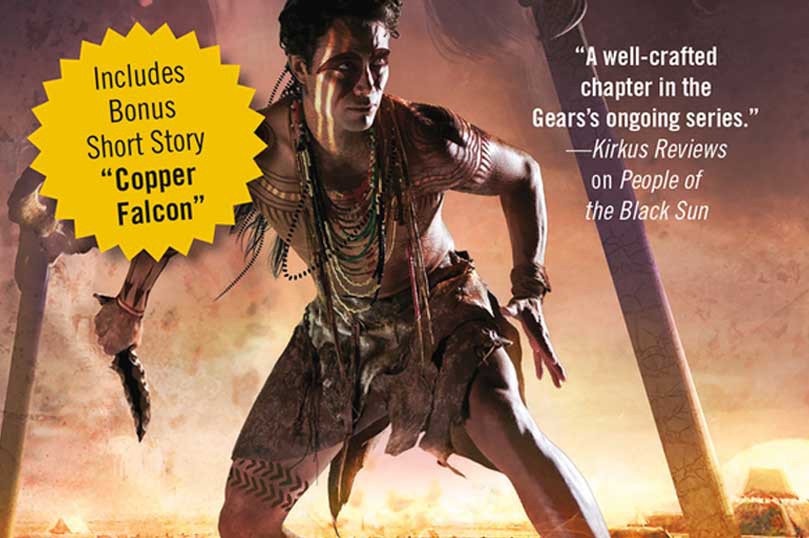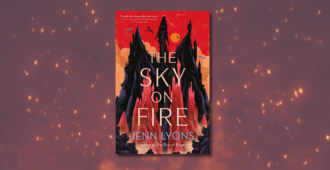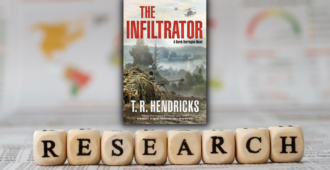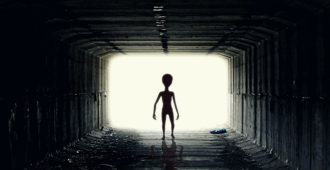Written by W. Michael Gear and Kathleen O’Neal Gear
In the twenty-three years since we wrote People of the River, archaeological research has revolutionized our understanding of the great site at Cahokia. In a sense, we got lucky. Today, People of the River still describes what researchers now call “Old Cahokia,” the complex settlement that existed at the end of the Edlehardt cultural phase, which ended at 1050 C.E..
At the time we wrote People of the River, we went out on a controversial limb and depicted Cahokia as a “state-level” society because it made sense. Today researchers talk in terms of “imperial” Cahokia; given the advancements in research, that, too, now makes sense.
A younger generation of archaeologists, like Tim Pauketat, John Kelly, Kent Reilly, and others, have beaten their way out of “processual” archaeology’s statistical, methodological, and theoretical straightjacket and taken a new look at Cahokia and its impact. In many ways, Cahokia was to North America as Rome was to Europe. Even today Cahokia’s stamp on Native American culture remains.
Cahokia, at its height, consisted of a series of mound centers built in strategic locations across the American Bottoms, on the eastern floodplain of the Mississippi and at St. Louis itself. Each appears to have been an autonomous politico-religious center tied to its peers through a shared mythology.
At the beginning of Cahokia’s Lohmann phase, at around 1050 C.E., something miraculous happened—what Dr.Timothy Pauketat calls the “Big Bang.” Tens of thousands of people from all over the American Midwest picked up entire villages and migrated to Cahokia. They brought their traditional designs, pottery, and household architecture, along with their peculiar styles of clothing, kinship, and languages, and settled every bit of arable land in and around Cahokia.
Due to Federal and Illinois cultural resource laws—which mandated archaeological survey prior to highway and, in some cases, urban development—wherever archaeologists looked in the American Bottom and in the eastern uplands they found what we now call “urban sprawl.” The mound centers around Cahokia weren’t separate towns; they were part of a megaplex. To date, more than two hundred mounds have been identified in association with the Cahokian phenomenon in the American Bottom and atop the upland bluffs in Illinois and Missouri. We now know that then, as today, from the top of Monks Mound, the city expanded farther than the eye could see—perhaps thirty miles in every direction.
The amazing thing is that it happened, essentially, overnight. In 1050, Old Cahokia was razed, new Cahokia was planned, surveyed on a great scale as a cosmic representation of the heavens, and building began. More than five square miles of land was leveled and graded to create the great plazas around Monks Mound. Mounds were raised in precisely determined, astronomically important, locations. Huge amounts of lumber were hauled in and palaces and temples—some five stories tall—were constructed on atop the mounds. Even with modern earth-moving equipment, this would be a huge undertaking. What the Cahokians accomplished with sticks and strings, hoes and baskets, and bent backs, was nothing short of monumental!
But what force on earth would motivate hundreds of thousands of people to pick up, move hundreds of miles, and, once plopped down amidst a polyglot of strangers, build an incredible city?
We think it was a religious miracle, perhaps inspired by the 1054 supernova which spawned the Crab Nebula. Our best guess is that the Cahokians believed the nova, shining so brightly in the midday sky, to be the return of the mythological hero Morning Star. Archaeologists like Tim Pauketat, John Kelly, Robert Hall, and others speculate that in a dramatic ritual, the Cahokians ceremonially resurrected the divine hero’s spirit into a human body.
Messianic movements are common in anthropological literature, and we think eastern North America had a long tradition of prophesy and messianic movements going back to the Woodland Archaic period, three thousand years ago. Such a movement explains the “Hopewellian interaction sphere,” the two-thousand-year-old Middle Woodland cultural phenomenon that swept eastern North America that we wrote about in People of the Lakes. Oral traditions of such a movement may have laid the foundation for the religious phenomenon that reached its peak at Cahokia between 1050 and 1100.
Remove the question from the hypothetical: What if it were true? What if Jesus suddenly returned to Jerusalem? Or if Mohammed miraculously reappeared in Mecca? What if tomorrow the Buddha stepped out of the sacred dimensions to sit and preach under the Bo tree? How many hundreds of millions of the faithful would trek to see share, and commune in the presence of the miracle? Tens of millions would consider it an affirmation and fulfillment of faith.
The notion that souls could be resurrected into someone else’s body was widespread across eastern North America when Europeans arrived. If you have read our People of the Longhouse, The Dawn Country, The Broken Land, or People of the Black Sun, you are already familiar with the Iroquois “requickening” ceremony. For those seeking additional information, we refer readers to Dr. Robert L. Hall’s 1997 An Archaeology of the Soul (University of Illinois Press, Urbana). For a discussion of Morning Star’s presence at Cahokia see Dr. Timothy Pauketat’s Cahokia: Ancient America’s Great City on the Mississippi (Viking, 2009).
Resurrected gods or not, Cahokia was an overnight sensation. Hundreds of thousands flocked there, and in doing so, they changed the face of North America. Cahokian colonies were established throughout the eastern woodlands; its traders and influence spread from the Atlantic to the Gulf Coast, to Oklahoma and the Dakotas. Reverberations from its messianic religion are still observed in renewal ceremonies like the modern Sun Dance. In a sense, we are all descendants—in one way or another—of Cahokia’s majesty.
…………………………
From the Tor/Forge May 5th newsletter. Sign up to receive our newsletter via email.
…………………………
More from the May 5th Tor/Forge newsletter:
- From the Archives: The Path to Mistborn Three by Brandon Sanderson
- Who Are the American Craftsmen? by Tom Doyle







